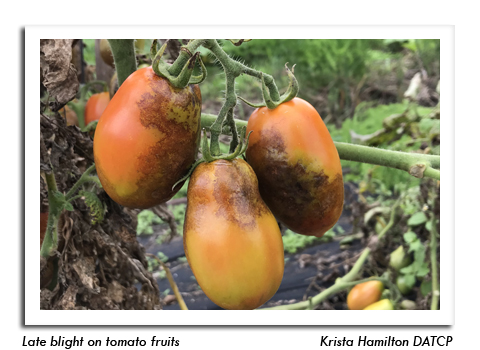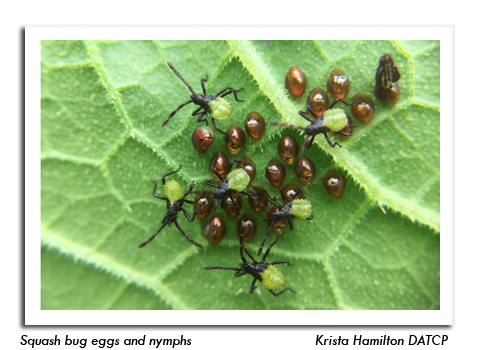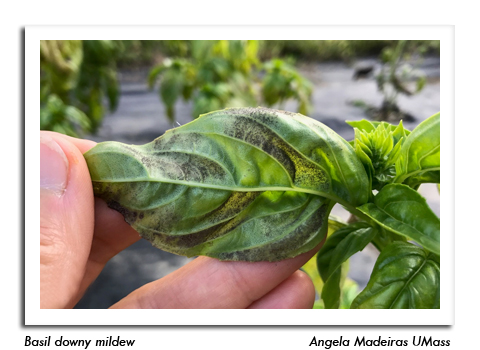
 |
|
|
Vegetables
Volume 65 Number 17 Date 08/27/2020 LATE BLIGHT - Potato and tomato growers are advised to continue routine scouting for signs of infection. Late blight has been confirmed in Adams and Pierce counties as of August 27. Rigorous sanitation including complete removal and destruction of all infected plants and debris is required if lesions are noticed. Late blight spores can travel significant distances, making this disease a community matter. Control of active infections is required by law, by either fungicide treatment or crop destruction. For removed plants, composting will not generate sufficient heat to kill the pathogen and is not recommended. SQUASH BUG - Egg laying is still occurring in home gardens and larger cucurbit plantings. Several fresh egg masses and many small nymphs were found this week on squash, pumpkins and zucchini on several southern Wisconsin community gardens, emphasizing the need for thorough fall cleanup of garden debris to reduce populations and eliminate winter hibernation sites. Crop rotation is also suggested if squash bugs have been a problem this summer. WHITEFLIES - A severe infestation of whiteflies was observed on tomato plants in La Crosse County. The flies were abundant enough that the tomato foliage and fruits had become covered in sooty mold from their honeydew secretions. Whitefly populations on this order can produce a noticeable yield reduction by impairing photosynthesis and contaminating the fruits. Control is particularly difficult late in the season once heavy infestations have developed. Management through biological control, including the commercially available parasitic wasp Encarsia Formosa, is an option for growers who experience consistent whitefly problems. BASIL DOWNY MILDEW - Symptoms of this rapidly-spreading, destructive disease are appearing on basil on western Wisconsin CSA farms. If basil downy mildew is suspected, harvesting immediately is the best option for avoiding total crop loss. Plants that are already showing noticeable BDM symptoms, such as yellowing leaves and gray downy growth on the lower leaf surface, should be promptly removed and disposed of off-site. -- Krista Hamilton, DATCP Entomologist .jpg)





|
|
|